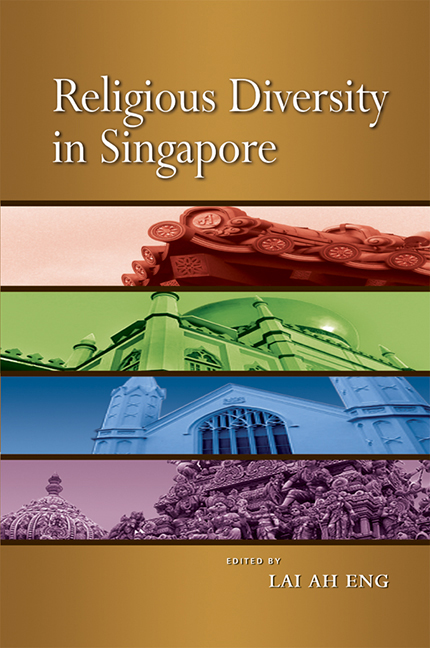Book contents
- Frontmatter
- Contents
- List of Figures and Tables
- List of Appendices
- FOREWORD
- PREFACE
- Acknowledgements
- The Contributors
- Abbreviations
- Glossary
- INTRODUCTION
- PART I The Landscape of Religious Diversity
- PART II Religion in Schools and Among the Young
- PART III Religion in the Media
- PART IV Religious Organizations in Social Services
- 19 Muslim Organizations and Mosques as Social Service Providers
- 20 Hindu Temples in Charities and Social Services
- 21 Delivering Welfare Services in Singapore: A Strategic Partnership between Buddhism and the State
- 22 Saving the City through Good Works: Christian Involvement in Social Services
- PART V Interfaith Issues and Interaction
- Index
22 - Saving the City through Good Works: Christian Involvement in Social Services
from PART IV - Religious Organizations in Social Services
Published online by Cambridge University Press: 21 October 2015
- Frontmatter
- Contents
- List of Figures and Tables
- List of Appendices
- FOREWORD
- PREFACE
- Acknowledgements
- The Contributors
- Abbreviations
- Glossary
- INTRODUCTION
- PART I The Landscape of Religious Diversity
- PART II Religion in Schools and Among the Young
- PART III Religion in the Media
- PART IV Religious Organizations in Social Services
- 19 Muslim Organizations and Mosques as Social Service Providers
- 20 Hindu Temples in Charities and Social Services
- 21 Delivering Welfare Services in Singapore: A Strategic Partnership between Buddhism and the State
- 22 Saving the City through Good Works: Christian Involvement in Social Services
- PART V Interfaith Issues and Interaction
- Index
Summary
INTRODUCTION
Since the early stages of Christian missionary activity in Singapore, Western missionaries had already merged the provision of social services with their evangelistic endeavours, a pattern which they had mastered in several Asian societies (Chi 2005; Kim 2001). The prominence accorded to social service provision followed the increasingly popular discourse within Western theological circles in the late nineteenth century which emphasized that the missiological enterprise had to first demonstrate the love of Christ through Christian charity before it broached the preaching of the “wrath of God” (Magnusson 1977; Ferre 1988).
As ministers from the developed world, Western missionaries were acutely aware of various gaps in social service provision among the populations that they sought to serve. This led them to embark on various initiatives. Methodist and Anglican missionaries who arrived in Singapore recognized the numbers of orphaned children and the many girls who did not receive an education, and set up orphanages and boarding schools catering to these disadvantaged populations (Ow 2005). The lack of healthcare for women and children led medical doctor Dr Charlotte Ferguson (the wife of the then Anglican bishop) to initiate the setting up of the St Andrew's Mission Hospital in 1913 (St Andrew's Community Hospital 1998–2005), while the lack of educational opportunities for handicapped persons led the American Baptist missionary Alice Shae to set up Christian Outreach to the Handicapped (Christian Outreach to the Handicapped, 2006). Similarly, theological educators at Trinity Theological College, recognizing the social upheavals caused by modernization in the 1960s, initiated the Churches Counselling Centre to provide counselling help (Yeo 1993). In these efforts the missionaries recognized that moving the hearts of a people foreign to the Christian gospel required various “sweeteners”. Thus much of the social service endeavours worked to “soften hearts” to the Christian faith.
The success of many of these and other social service endeavours were partly related to the ability of Western missionaries to identify pertinent needs in the community and to mobilize resources both in terms of finances and expertise from their international mission agencies in the establishment and upkeep of these social services.
- Type
- Chapter
- Information
- Religious Diversity in Singapore , pp. 524 - 554Publisher: ISEAS–Yusof Ishak InstitutePrint publication year: 2008

